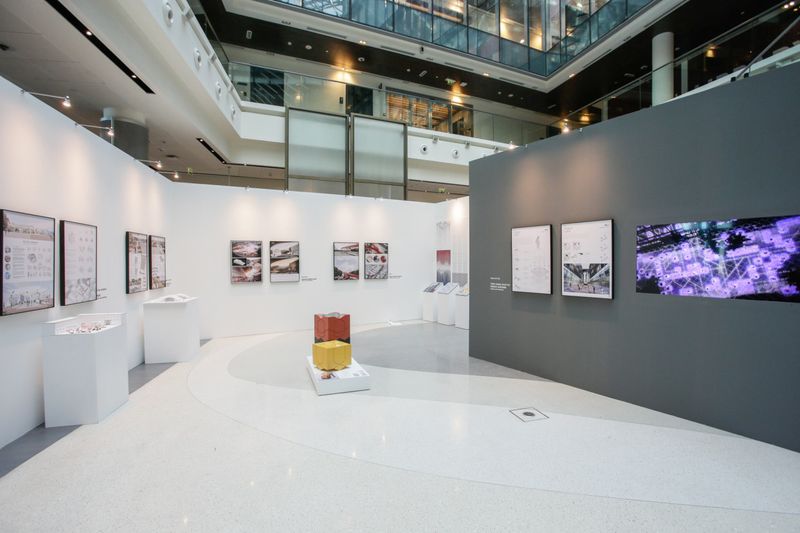Exploring post-pandemic design response, Downtown Design’s exhibition spotlighted progressive design thinking emerging from the Middle East’s cosmopolitan design industry.
Highlighting the regional design industry’s response to the shifting attitudes towards how we will engage with our surroundings, during Dubai Design Week 2020, Downtown Design’s multimedia exhibition, ‘The Shape of Things to Come’ showcased exploratory and future work from 27 of the Middle East’s most innovative and inspiring architecture and interior design studios.
Conceptualising how we will live, work and play in a post-pandemic world, the exhibition dismantled outdated stereotypes of the region being an echo chamber for foreign trends with plausible proposals rooted in our unique context and locality.
Dilmunia Mosque by Pace, Kuwait
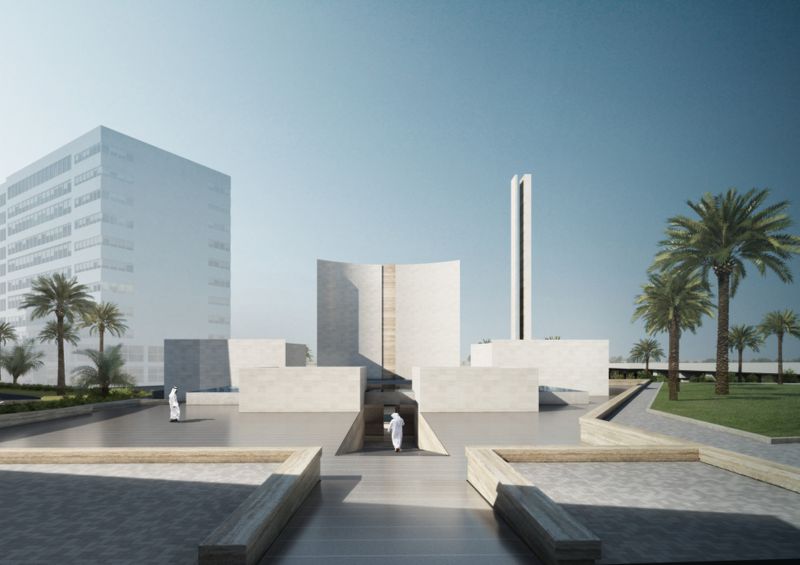
Connecting concepts of well-being with a place of worship, this proposal embodies local culture, the region’s architectural vernacular and the Muslim faith.
Pace’s design encourages worshippers to immerse themselves into an enriching journey guided by light that begins on an elevated streetscape and descends into a sunken portico. The descent from street level is designed to enhance the worshipper’s process of disconnection metaphorically and physically from the outside world.
Pace’s design encourages worshippers to immerse themselves into an enriching journey guided by light that begins on an elevated streetscape and descends into a sunken portico. The descent from street level is designed to enhance the worshipper’s process of disconnection metaphorically and physically from the outside world.
Revival Gardens by RMJM, UAE
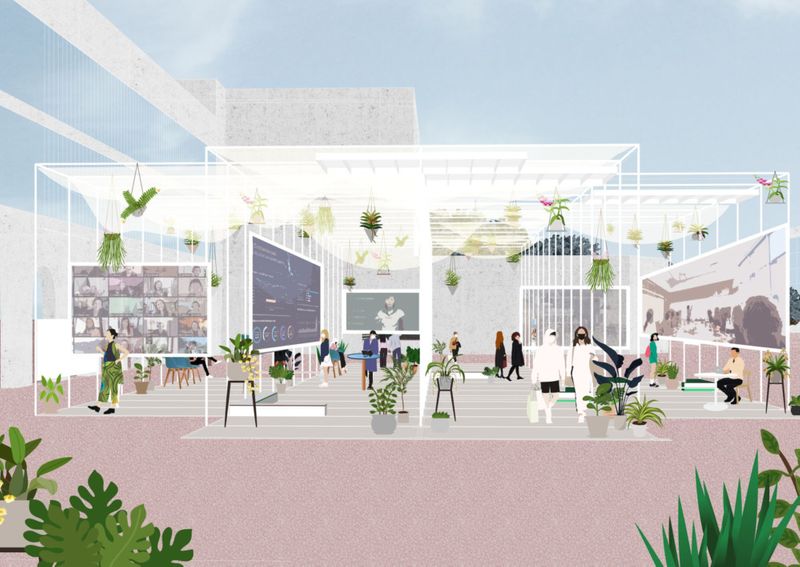
The Pandemic has exposed vast inequalities that are often ignored when considering design for typical work or educational expectations. This has taken heavy tolls on collective mental well-being, resulting in burnout, heightened anxiety or fatigue. And whilst there are now fresh, commonplace models of societal interactions through virtual space, people have been thrown into this new sphere, unprepared from a well-being point of view.
Revival Gardens is an attempt to challenge the new behaviours caused by the pandemic into something positive and uplifting. Modular and scalable, the proposal can be retrofitted into existing pockets of cities and towns that can be adapted for future use even after the pandemic passes.
Revival Gardens aims to provide an equitable platform, that is clean and healthy, promoting social and mental well-being for public solidarity and collaboration through creating adaptive digital public spaces.
Evolve by Rabih Geha Architects, Lebanon
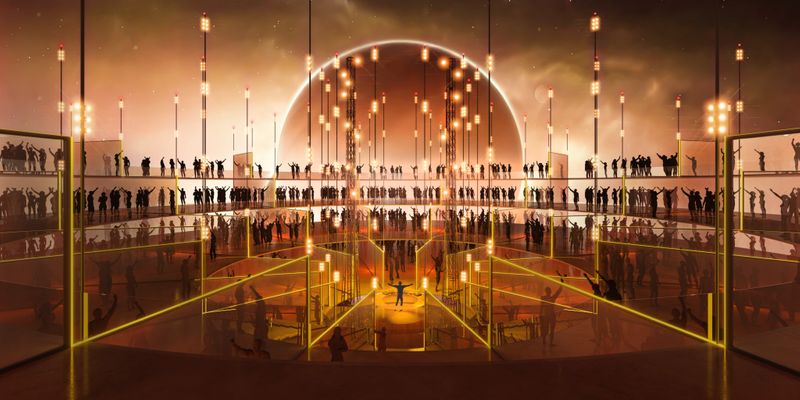
Post COVID-19, we can still club. We will just find a way to do it differently.
Clubbing is a multisensory experience that involves tactile, visual and auditory stimulation. Closeness, the defining features of crowds, is usually at the heart of the clubbing experience.
With the break of COVID-19, we found ourselves deprived of our sense of touch. There is now a pressing need to redefine the concept of ‘crowd’. Our natural behaviour remains the same but has simultaneously changed a lot. We still gather, but in smaller groups; we still greet, but minimise physical contact.
Evolve explores the reshaping of our nightlife by creating a new experience that can preserve our need to go out in the midst of a new set of living conditions. Through a layered, concentric layout that is focused on three main factors: space, people and entertainment, crowds can party together, all the while keeping their distance. This is where limitation in physical freedom is balanced by the expanded sensory experience, leaving room for a new definition of normality.
VOW by Sibyl Design Studio, Kingdom of Saudi Arabia
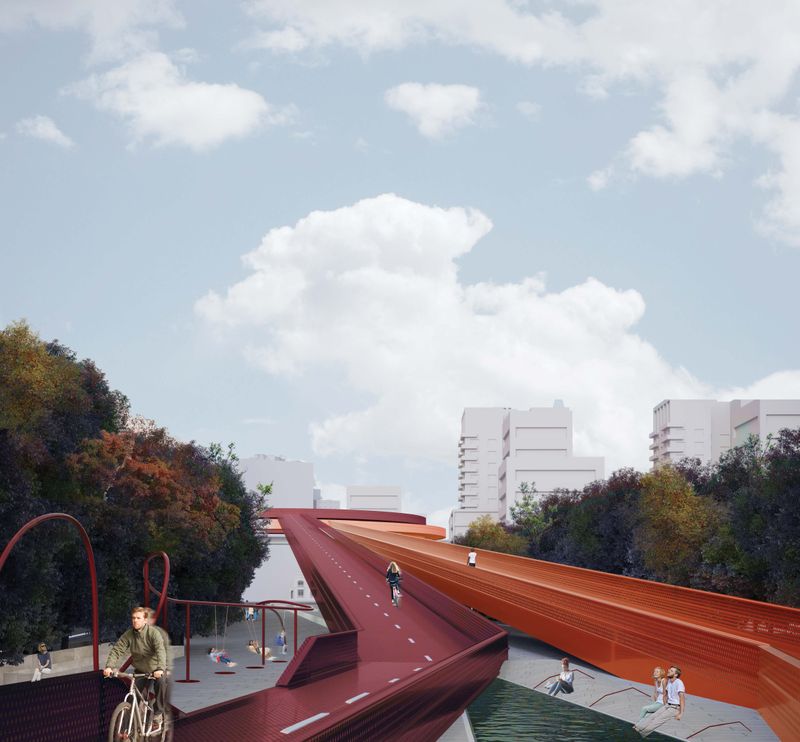
Image Credit: Supplied
Designed to be a physical and psychological reaction for urban ecosystems in Jeddah, the concept for this modular, multilayered pedestrian system was born from the studio’s research into how infrastructural interventions could support an organic evolution of the Middle East’s urban fabrics.
Exploring how the pedestrian walkways of Jeddah, ‘Al-Mamsha’, could evolve as response to the restrictions placed upon human movement and interaction by the Pandemic, the studio has developed ‘The Mamsha of Al-Tahliya Street’; perpendicular to the City’s growth along the cornice, the project looks to expand the city’s urban network from the west to east, allowing dwellers to adapt, move and connect organically.
Their solution of a split-level network acts as the neighbourhood’s spinal cord; with the traffic segmented in two colour-coded levels, it offers controllable solutions for pedestrian traffic, running tracks and cycling paths that can coexist within the rules of social distancing. On the ground level, the network offers opportunity for the community to reconnect with communal spaces, sunken shops and skate parks.
In the midst of these two zones, an open-air, tree-lined zone for resting and solitude is designed as a stepped platform.
You can still discover the exhibition digitally at www.downtowndesign.com/onsite-d3/theshapeofthingstocome/
